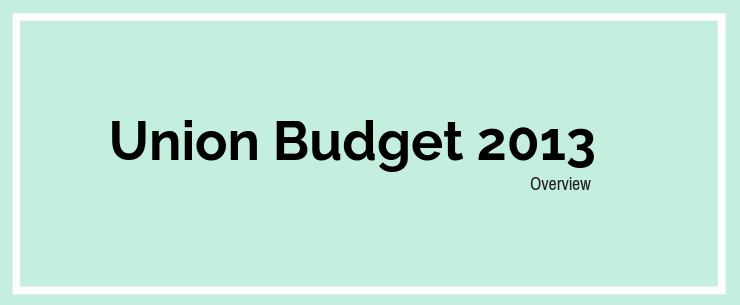India has always been identified as a savings oriented economy with savings accounting for approximately 32% of GDP in the Indian economy. Out of this, a minuscule portion of around 5% is currently being invested into shares and debentures, with bank deposits forming close to 45% of the savings pie, and other investment avenues such as gold, real estate, etc. taking their share from the rest.
This is mainly attributable to the mis-selling practices that have been adopted at large by the financial institutions of the country, and the rise in real estate prices. The damage has been done! A large number of retail investors have lost faith in equity-linked financial products, particularly mutual funds and insurance-linked investment instruments, and are hence moving to gold and real estate investments.
Which route are the savings taking?
Savings are very essential for any economy to grow. And what’s even more important is the channelization of these savings to productive sectors, like infrastructure, power, and utility development. However, more and more savings are currently being channelized towards buying gold, whose contribution to the Indian economy has majorly been counter-productive, and real estate.
The shift of investments from equity-linked insurance and mutual fund products to the likes of gold and real estate is leading the economy into a spiral with its set of negative consequences on the economy.
The increasing preference towards investing in gold has caused gold imports to double, putting pressure on the current account deficit. Had these savings been invested in honestly sold financial instruments, they would have been put to productive use and helped fund the long-term infrastructural needs of the country.
Also, after the credit crises of 2008 educated central bankers worldwide, about the long-term negative impact of an asset pricing bubble on inflation in the economy, many economies learned from it. However, in India, increasing urbanization coupled with a shift in savings towards real estate investments has caused a steep increase in real estate prices.
The question remains; is this price rise sustainable? The system must come up with a solution to bridge the demand-supply gap that is currently putting inflationary pressures on land prices.
To read more on the above, follow this link:
http://www.indianexpress.com/news/winning-back-the-aam-investor/1074403/3
What the Indian equity markets have to offer?
With infrastructural development in India picking pace, it has become imperative that the equity markets help fund this growth. Capital markets have always been efficient allocators of capital. Hence, increased investor participation is the need of the hour.
India, with its young entrepreneurial population, has been envisaged to be the 3rd largest economy by 2050, with infrastructural spends crossing Rs. 65,00,000 crores. This hints to the probability that India has embarked on its growth trajectory. It is now up to us to decide, whether we want to take our share in the returns by contributing towards this growth through the capital markets.
Moreover, the rising trend in FII portfolio investments in the Indian Stock Market offers a conviction that the equity markets have more to offer than other markets. Sensible investing can always get your returns far in excess of your normal expectations from other forms of investments. All you need to do is choose the right stocks through stock analysis, and invest at the right time!
The Silver Lining…
The government has started making efforts to create and build investor confidence in the equity stock market, with the launch of schemes such as the RGESS. To know more about the scheme, please click here.
However, some concerns that could be answered in this respect are:
• The scheme in its current form is open to only first time retail investors with annual income less than 10 lakhs.
The Government needs to increase the scope and ambit of entities eligible to invest and take benefit of the scheme, to increase participation.
• Currently, the securities and MFs/ETFs that are eligible under the scheme are specified and limited.
With the inclusion of more financial instruments as eligible securities under the scheme, the volume of fund flow into the equity markets should definitely see a rise.
• Also, the maximum amount eligible for claiming a deduction is Rs. 50,000, with a fixed lock-in period of 1 year, and a flexible lock-in of 2 years subsequently.
This limits the extent of motivation towards investing of an investor to the maximum amount that is eligible for claiming deductions.
What the Union Budget 2013 needs to address…
The economy is being projected to grow at just 5% in fiscal 2013 and is facing deep structural problems because of policy uncertainty and the lack of adequate economic reforms since 2004. Consequently:
- there has been a slowdown in infrastructure and corporate investments
- delay in project approvals and implementation and electricity shortages are holding back investment activity
- subsidies over the last 4 years i.e. over 2% of GDP are an important cause of the rise in the revenue deficit and the consequent inadequacy of forex reserves in the country
- increasing credit quality issues in the financial sector
The government, thus, needs to address two major issues in its Union Budget this year:
- Taking steps to address the structural issues that are currently inflicting the economy, and are leading to a situation where investors are becoming wary of investments in market-linked products. The economy needs to stabilize, and subsequently grow, for investors to build expectations in terms of getting returns from the market.
- Curbing mis-selling practices currently being adopted at large by most financial institutions. Tightening regulation to restore investor faith and confidence, on the deliverability of promises made while selling the product.
So, is the Government prepared to provide an effective solution to the above structural issues currently affecting the system in its forthcoming Budget declarations? Would ‘the suitcase’ have anything in store to restore investor confidence in the equity markets?
What are your expectations from the Union Budget 2013? Do post in your comments below…
Related Article: Union Budget 2019: Overview
If you liked what you read and would like to put it in to practice Register at MoneyWorks4me.com. You will get amazing FREE features that will enable you to invest in Stocks and Mutual Funds the right way.
Need help on Investing? And more….Puchho Befikar
Kyunki yeh paise ka mamala hai
Start Chat | Request a Callback | Call 020 6725 833 | WhatsApp 8055769463







UPA had 5 full years to usher the nation into new reforms. they had obtained this victory by launching unproductive schemes like farm loan waiver and MG-NAREGA. But these schemes as well as other schemes and works were riddled with large scale corruption as the scams being unearthed very regularly, prove. B’cause of regular scams, the confidence of UPA has gone down and they are likely to re-employ such unproductive schemes for winning 2014 elections. In my opinion, the Govt will focus on winning elections rather than improving the condition of economy. 2014 budget will be prepared with this objective in mind. Therefore, no silver lining is anticipated.